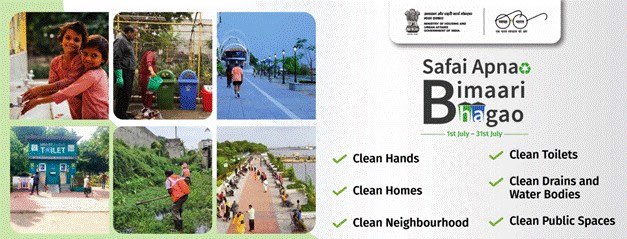Published on Jun 27, 2025
Daily PIB Summaries
PIB Summaries 27 June 2025

Content :
- Sarbananda Sonowal Inaugurates India’s First Maritime NBFC — Sagarmala Finance Corporation Limited (SMFCL)
- MoHUA Rolls Out Mega Monsoon Swachhata Campaign
Sarbananda Sonowal Inaugurates India’s First Maritime NBFC — Sagarmala Finance Corporation Limited (SMFCL)
Highlights
- Inaugurated by: Union Minister of Ports, Shipping & Waterways, Sarbananda Sonowal.
- Date of RBI NBFC registration: June 19, 2025.
- Occasion: Marks transformation of Sagarmala Development Company Ltd. into an NBFC.
- Category: Mini Ratna, Category-I CPSE (Central Public Sector Enterprise).
Relevance : GS 3(Infrastructure , Banking)
Purpose & Significance
- First NBFC dedicated to maritime sector in India.
- Aims to bridge financial gaps in maritime infrastructure and logistics.
- Supports Maritime Amrit Kaal Vision 2047 and the goal of Viksit Bharat.
- Responds to a long-standing industry demand for tailored financial instruments.
Strategic Roles & Functions
- Offers customized financial solutions:
- Short-term, medium-term, and long-term funding.
- Target stakeholders:
- Port authorities
- Shipping companies
- MSMEs, startups
- Maritime education institutions
- Enables investments in:
- Shipbuilding
- Renewable energy
- Cruise tourism
- Maritime skilling & education
Impact on Maritime Sector
- Provides a sector-specific financial ecosystem.
- Expected to accelerate innovation, investment, and inclusive development.
- Enhances logistics efficiency and sustainable development in the maritime domain.
Leaders’ Comments
- Sarbananda Sonowal:
- Called it a “major milestone in India’s maritime journey.”
- Emphasized alignment with PM Modi’s vision and the Amrit Kaal goals.
- Shantanu Thakur:
- Highlighted SMFCL’s role in fostering a dedicated financial ecosystem.
Conclusion
- SMFCL positions India to become a global maritime power by providing structured, targeted financing to a crucial but underserved sector.
MoHUA Rolls Out Mega Monsoon Swachhata Campaign
Campaign Overview
- Name: Safai Apnao, Bimaari Bhagao (SABB).
- Duration: 1st – 31st July 2025.
- Launched by: Ministry of Housing and Urban Affairs (MoHUA) under Swachh Bharat Mission – Urban (SBM-U).
- Tagline: “Safai Apnao, Bimaari Bhagao”
- Objective: Health-centric sanitation to prevent water-borne and vector-borne diseases during the monsoon.
Relevance : GS 2(Governance ,Health)

Key Focus Areas
- Preventive drain cleaning and garbage hotspot reduction.
- Avoiding water stagnation to prevent diseases like Dengue, Malaria, and Chikungunya.
- Ensuring access to sanitation and safe drinking water in vulnerable areas.
- Cleanliness drives in public/community toilets, schools, and slums.
The 6 Swachhata Mantras
- Clean Hands
- Clean Homes
- Clean Neighbourhood
- Clean Toilets
- Clean Drains & Waterbodies
- Clean Public Spaces
Behavioral & Community Interventions
- Citizen mobilization through behavioural nudges for hygiene and waste management.
- School campaigns promoting handwashing and child hygiene.
- Encouragement of RWA, NGO, and citizen participation.
- Use of the Swachhata App for grievance redressal.
Urban Local Bodies (ULBs) Responsibilities
- Identify high-risk areas and conduct targeted sanitation action.
- Ensure daily waste collection, toilet maintenance, and public space cleanliness.
- Report all campaign activities on the Swachhatam Portal.
Special Initiatives
- Special Purpose Vehicles (SPVs) in 100 Smart Cities to clean markets, food streets, heritage areas.
- Use of Integrated Command and Control Centres for innovation and monitoring.
- Focus on SafaiMitras’ welfare, clean water access, and hygiene.
Inter-Ministerial Coordination
- Aligned with efforts of:
- MoHFW
- DDWS
- MoRD
- MoWCD
- Department of School Education and Literacy
Conclusion
- The SABB campaign reinforces a preventive, participatory, and inter-agency approach to urban sanitation during monsoon, aiming for cleaner, healthier cities.
